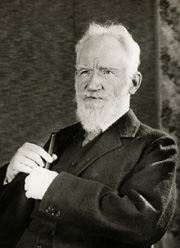|
While
not social or moral
justice, per say,
criticism plays an
important role in the
world of the
arts. This essay
explores the ethics of
journalistic criticism. Do
artists not have the right
to be judged fairly for
the work they do? What
constitutes fair and
informed criticism? How
have the roles of critic
and artist changed in
recent years?
 "Cutthroat bandits in the paths of "Cutthroat bandits in the paths of
fame," so railed poet Robert Burns about the critics.
"Do you know who critics are?" Benjamin Disraeli once asked
contemptuously. "They are men who have failed in literature and art."
Parasites preying on the fringes of art, culture vultures turning
inspiration into industry – these are some of the epithets hurled at
journalists who earn their living covering music, theatre, dance, and
the visual arts.
Do critics deserve this kind of vituperation? Do they really wield the
power that provokes such intense dislike? Is their impact, especially
in today's age of widespread media and social networking, more
negligible than before? Surely in disciplines like music criticism, which
often merely recounts the events of a single evening, rather than in
theatre or film where a run of a work is at stake, a review is less of a
deciding factor in success or failure. But from an artist's perspective
the judgment passed on his work by what baritone Thomas Hampson
once called "the vast observation industry" can sometimes be hard to
reconcile with his own inner sense of purpose. "If one gives them
[critics] power," Jess Thomas once said, "they will have power," and
he urged artists to remain true to their own principles and own critical
judgment. But still many artists remain sensitive to the risk posed by
critics. Hampson expressed it candidly and practically when he said,"
I read all my reviews. I respect a great many of them intellectually,
and I respect them all in the sense that they are land mines!"
But does criticism have to be nothing more than a potential hazard, a
land mine which terrorizes a vulnerable artist and an impressionable
public? Cannot arts criticism serve a higher, less confrontational
purpose? How can contemporary arts criticism move beyond
negativism and become something far more constructive and
collaborative? How can the ideal critic become not a judge dispensing
"absolute" wisdom, but rather a partner and prime mover in fostering
a love and respect for the art he chronicles?
In 1992, with a relatively new byline on the New York music scene, I
published a manifesto about music criticism which had the youthful
audacity to ask just these questions. More than three decades later, I
think that, while the economics and, to some degree, the politics of
arts journalism have changed radically, these ethical questions
continue to have resonance – perhaps even more now with the
internet, blogs, and widespread media coverage that can transform a
single critical judgment into a global pronouncement at will. Thus, it
becomes all the more imperative for a journalist who writes criticism
to thoughtfully self-evaluate his methods and his mission.
In today's climate of vanishing print media, shrinking advertising
income, and generally disastrous financial support for the arts, the
practicalities of being an arts journalist/critic are ever more
challenging. Where critics on daily newspapers, monthly magazines,
and other media once could boast considerable influence with both
the public and the arts they covered, today's reviewers are sometimes
regarded as little more than free publicists by press officers in arts
institutions - to be quoted if positive and discarded if negative.
Editors, too, are often sensitive to the potential loss of advertising
revenue, especially in small town publications, thereby limiting the
reviewer's freedom and independence. Thus, the contemporary
journalist, who wishes to become a respected, knowledgeable, and
reputable critic must fortify his own standards of professional integrity
and assess the deeper meaning of the work he undertakes.
Perhaps in order to best formulate an ethical critical standard, it is
first necessary to examine some of the common pitfalls in reviewing
the arts. The first of these, especially in music criticism, but also in
theatre, is "the golden age syndrome." Critics nostalgically yearn for
the performers of the past, whose accomplishments wax more
wonderful with memory. For these reviewers no contemporary artist
will ever measure up, and modern context seems to have little
relevance to them. From that line of thinking, it is easy to embrace the
second cardinal pitfall: that of adhering to a single personal standard
of interpretation for a work. It is these reviewers who rebel so
vehemently against directors' new stagings in opera or theatre because
it violates the composer/playwright's meaning. What exactly is that
meaning, and is any one critic privy to a special truth about creative
intent? Shouldn't a reviewer grant performance artists, by the very
nature of their task, the right to reinterpret and recreate, and should
he not first try to understand the thrust of that interpretation before
assessing its validity? That is not to say every new staging offers a
brilliant insight, some may be mixed bags, a few outright disasters, but
pre-judgment does not help to see this clearly.
Equally frustrating can be the style of many critics. Criticism,
especially with modern blogging, often descends into gossip and
hearsay, pandering perhaps to popular taste or written with the intent
of making the critic appear to be "an insider." One such famous
episode happened in the late 80s at the New York Metropolitan Opera
when Martin Mayer wrote in Opera, comparing some performances:
"My spies tell me that [tenor X] did not do very well and [tenor Y] did
."[1] Unfortunately, the "spies" seem to have been embarrassingly
misinformed, since tenor X never sang the part at all–something a
flood of letters to the editor immediately clarified.
 Peppering a column with gossip is not
nearly as irritating as the reviewer who poses as a stand-up comedian,
using wisecracking one liners to promote a cynical, superior self
-image. Admittedly, such famous critics like George Bernard Shaw did
use scathing humor in their reviews, but few modern writers are Shaw,
and moreover, he balanced the joke with detailed and substantive
analysis. In ever decreasing column sizes, can a reviewer afford to
waste time on remarks like these found in a review of the Met's 1986
Die Walküre: "Hunding's hut is a pagan period piece – antlers on the
wall and a big hide on the wash line. Where, you wonder, are
Sieglinde's socks?"[2] Peppering a column with gossip is not
nearly as irritating as the reviewer who poses as a stand-up comedian,
using wisecracking one liners to promote a cynical, superior self
-image. Admittedly, such famous critics like George Bernard Shaw did
use scathing humor in their reviews, but few modern writers are Shaw,
and moreover, he balanced the joke with detailed and substantive
analysis. In ever decreasing column sizes, can a reviewer afford to
waste time on remarks like these found in a review of the Met's 1986
Die Walküre: "Hunding's hut is a pagan period piece – antlers on the
wall and a big hide on the wash line. Where, you wonder, are
Sieglinde's socks?"[2]
From this predilection for comedy, it is only a few more steps to the
review which is savagely vituperative or driven by some hidden
negative agenda. How many times does the comment exceed the
bonds of good taste? ("Basso X looked and sounded as if he had just
dined on rotten femur.")
[3]. Other times it exceeds the limitations of the assignment,
commenting on past performances and predicting future ones – all of
which has little to do with the present subject of the review. And the
danger inherent in this kind of criticism is that the sweeping judgment
, especially if it comes form a major media source, can acquire a spin
of its own; it becomes the "official word" and it is difficult to dislodge
the thought from public consciousness. The best arts critics display an
absence of pettiness, flippancy, and vindictiveness and replace these
with thoughtful, informed, specific analysis and an all-abiding respect
for the art they analyze.
Happily, there is (and has been historically) enough worthwhile arts
criticism to be found which does point to the standards of fair
assessment and relatively objective understanding. The operative
word here is "relatively," as by nature criticism is subjective; it is one
person's viewpoint, and should be acknowledged as such. At one time
or another a critic may feel compelled to lobby for a cause – urging a
theatre company to re-evaluate its programming choices, for example.
This is a critical prerogative, but expressing a preference does not
mean closing one's eyes to its alternatives or losing one's grip on the
openness that permits a reviewer to regard each performance as an
opportunity for discovery.
Too often the spirit of adventure that should motivate a reviewer as he
approaches each performance has evaporated. Some critics have
become so jaded that they are in danger of losing their spontaneity
and their love of the art form they cover. Ideally, a reviewer should
put aside fatigue, apprehensions, previous associations and approach
a performance with a predisposition to enjoy it – to critique it, of
course, but not without respect, even affection. That may seem like a
tall order, especially when the evening does not live up to expectations
, but it is, I believe, an obligation. The critical profession is no mere job
, but a task which requires the journalist to be an explorer, setting out
in terra nova. The journalist who wishes to pass judgment on an
artistic work/performance must do it as an act of love, which is truest
when it is most honest but most caring.
For in the best of all possible worlds, the critic will be not an adversary
but the artist's collaborator, there to help support and guide careers
and preserve and nurture the art form about which he writes. To that
end here are some guidelines. First and foremost, the writer must
remember that criticism should include both positive and negative
comments. The occasion that is perfectly conceived and executed may
be rare, indeed, but then, so, too, is the performance that has no
redeeming virtues at all. Engaging in a rant about critical displeasure,
as if the evening was purposely designed to pique the reviewer's
sensibility is an absurd, but all too common practice. One needs only
reread the New York theatre reviews of Frank Rich, who was
nicknamed "the butcher of Broadway" during his tenure at the New
York Times. One of his most memorable assessments of Andrew
Lloyd Webber's Phantom of the Opera may have seemed amusing as
he said it, but is ludicrous in hindsight: "Its music is deplorable bubble
gum, the acting is two-dimensional, and it sucks the horror out of a
classic horror story." [4] Such inveighing, I would suggest, has the
unintended result of diminishing the writer's credibility. The critic
should learn to phrase in measured terms, remembering that if an
artistic failure has occurred, the victim is not the "long-suffering critic"
but the work of art itself, and it is the reviewer's responsibility to offer
advice on putting the derailed performance or the career back on
track.
This means structuring negative commentary so it effects positive
change: removing loaded, judgmental language and replacing it with
specific recommendations or reasonable alternatives. With the task of
judging a work of art comes the responsibility to educate audience and
performers. The journalist must do his homework and come prepared
to the artistic experience he plans to evaluate. While this may seem
self-evident, one might be surprised at how many writers, especially in
smaller, less prestigious media outlets, have absolutely no knowledge
of what they are about to see, not to mention any training or
background in the discipline they have come to review. This is not to
say that to review a recital, for example, one needs to be a singer, but
one should surely understand the basics of voice and piano, not to
mention the historical and artistic context of the songs to be
performed. Or if a theatre piece is premiering, then it might be helpful
to know everything one can about the playwright's previous work, the
style and cultural milieu of the work, other plays of that genre, as well
as much information about the performers and creative team as
possible. And this does not mean simply regurgitating information
outlined in the press release, or most maddeningly, simply retelling or
describing the story.
 As Bob Dylan remarked pithily, "Don't
criticize what you don't understand." Evaluating must be based on As Bob Dylan remarked pithily, "Don't
criticize what you don't understand." Evaluating must be based on
analysis.
Naturally, no critic can carry around in his head a font of encyclopedic
knowledge, but every journalist has the responsibility to know do his
research before he comes to an event. The critic must become a
continuing student of the art form they describe, so that, in turn, they
are better equipped to teach others.
 As Oscar Wilde summed it up: "The critic
has to educate the public; the artist has to educate the critic." As Oscar Wilde summed it up: "The critic
has to educate the public; the artist has to educate the critic."
The journalist should approach a performance with as little personal
and professional baggage as possible; he should come ready to engage
with the artist, to become a participant in the performance, ready and
willing to feel with the artists and to experience the art. Only after
that magic has occurred is it time to change gears and analyze what
has been experienced. Modern filing practice fortunately allows more
time to do just that. Reviewers no longer dash to typewriters to make a
midnight deadline, and this "morning after" policy does allow much
needed space for distancing and reflection. It gives the writer time to
sift through artistic impressions judiciously, discarding those that
seem mere personal response, articulating those that are based on
knowledge, understanding, experience. It is in this way that the
professional critic distinguishes himself from the vast modern pastime
of peer reviews. Today when anyone on Amazon or Facebook or his
own blog can express his like or dislike of a book, concert, film, play,
or painting, the notion of a review being something more than just
preference may be hard to establish. And there is nothing wrong with
an individual's preferences or the 2nd amendment right to discuss
them in the appropriate forums, but positive or negative personal
response does not constitute judicious professional criticism, and it is
the obligation of the professional critic to establish his credentials by
basing his writing on fact, objective observation, and well reasoned
analysis.
Lastly, we come to important concepts which should govern all
criticism, not to mention all civil discourse. The arts journalist should
accord to the artist and the work of art the respect their
accomplishments merit. This means counterbalancing negative
comments with positive ones, tempering language, and remembering
that an artist is not a machine and a performance is a living thing. Is it
not just as meaningful, and a great deal more civil, to describe a sixty
-year old distinguished baritone whose voice may be showing signs of
wear as in "good current voice," especially if the performance has
other strengths, rather than dwelling on how frayed his instrument
may sound? Disasters may make more sensational copy, but in the
long run I believe tastefulness, decorum, and fair play make for more
just criticism.
 And this brings us to the final admonition.
As Alexander Pope so aptly phrased it, "Nor in the critic, let the man
be lost." The caring critic has an obligation to remain sensitive to the
human dimension of art. Perfection is less an attainable reality as it is
an illusion fostered by great artistry, and art, as the Greeks so well
understood, is a shared ritual, a sacred collective experience. The
critic should, like the artist, serve a higher calling. He should not set
himself up as an absolute arbiter, though he may set standards and
fight battles; he should not imagine himself an implacable judge with
life and death power over public taste and artistic careers. Rather he
should strive to be a participant in an ennobling ensemble effort. And this brings us to the final admonition.
As Alexander Pope so aptly phrased it, "Nor in the critic, let the man
be lost." The caring critic has an obligation to remain sensitive to the
human dimension of art. Perfection is less an attainable reality as it is
an illusion fostered by great artistry, and art, as the Greeks so well
understood, is a shared ritual, a sacred collective experience. The
critic should, like the artist, serve a higher calling. He should not set
himself up as an absolute arbiter, though he may set standards and
fight battles; he should not imagine himself an implacable judge with
life and death power over public taste and artistic careers. Rather he
should strive to be a participant in an ennobling ensemble effort.
Fair and just arts criticism holds as its mission documenting,
preserving, and evaluating moments of cultural history; advancing the
standards of art and its interpreters; and lifting criticism above mere
reportage or censure to the role of addressing with judicious
argumentation the deepest fundamental issues of the art form, itself.
The critic who strives for these standards must not forget that the very
artists he must criticize are also his colleagues – joint adventurers in
shaping civilization's great living languages. To them and to the art
they all serve he owes it to chastise with respect, praise with
encouragement, and question with faith.
Cover Graphic - "la Critique" colored engraving by Travies
Notes
1. Martin Mayer, "New York Column," Opera, v. 38, December 1987
2. Manuela Hoelterhalter, "Die Walküre Review," Wall Street Journal,
30 September 1986
3. Ibid
4. Frank Rich on "60 Minutes", 1988
|
|